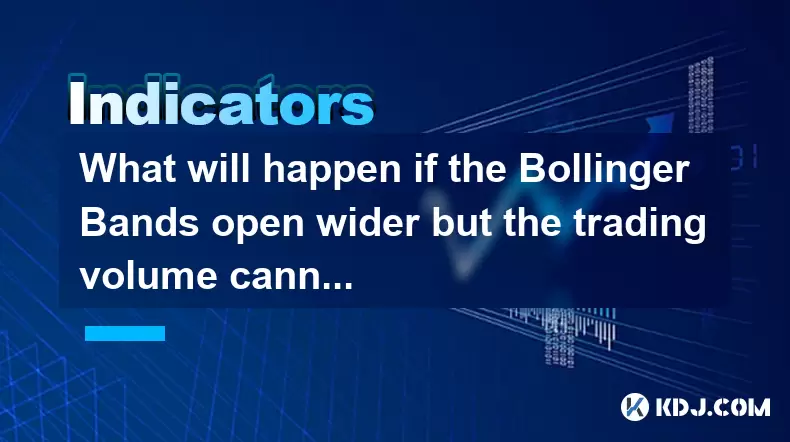-
 Bitcoin
Bitcoin $118800
0.58% -
 Ethereum
Ethereum $3813
6.89% -
 XRP
XRP $3.529
2.75% -
 Tether USDt
Tether USDt $1.000
-0.01% -
 BNB
BNB $755.1
3.06% -
 Solana
Solana $183.0
2.98% -
 USDC
USDC $0.9997
-0.01% -
 Dogecoin
Dogecoin $0.2670
9.75% -
 Cardano
Cardano $0.8748
5.90% -
 TRON
TRON $0.3192
0.08% -
 Hyperliquid
Hyperliquid $47.26
5.01% -
 Stellar
Stellar $0.4763
2.59% -
 Sui
Sui $4.001
5.68% -
 Chainlink
Chainlink $19.68
8.62% -
 Hedera
Hedera $0.2796
3.70% -
 Bitcoin Cash
Bitcoin Cash $550.9
9.05% -
 Avalanche
Avalanche $25.39
6.47% -
 Shiba Inu
Shiba Inu $0.00001557
5.68% -
 Litecoin
Litecoin $117.7
15.59% -
 UNUS SED LEO
UNUS SED LEO $8.975
-0.11% -
 Toncoin
Toncoin $3.315
4.44% -
 Polkadot
Polkadot $4.581
7.41% -
 Uniswap
Uniswap $10.84
7.11% -
 Pepe
Pepe $0.00001451
10.27% -
 Ethena USDe
Ethena USDe $1.001
0.00% -
 Monero
Monero $327.5
0.06% -
 Bitget Token
Bitget Token $5.018
2.63% -
 Dai
Dai $0.9999
0.00% -
 Aave
Aave $334.4
5.21% -
 Bittensor
Bittensor $432.3
3.73%
What will happen if the Bollinger Bands open wider but the trading volume cannot keep up?
Widening Bollinger Bands without volume support often signal false breakouts in crypto trading.
Jun 29, 2025 at 05:28 pm

Understanding the Bollinger Bands and Their Behavior
Bollinger Bands are a popular technical analysis tool used in cryptocurrency trading. They consist of three lines: a simple moving average (SMA), typically set at 20 periods, and two outer bands that are standard deviations away from the SMA. When these bands widen, it usually signals an increase in volatility. Traders often interpret this as a potential precursor to significant price movement.
However, not all widening of the Bollinger Bands leads to strong price action. In some cases, especially during sideways or consolidation phases, the bands may expand without corresponding trading volume supporting the move. This divergence can lead to misleading signals and unexpected market behavior.
Widening Bollinger Bands suggest increasing volatility.
Lack of volume support implies weak participation from traders.
How Volume Influences Price Movement
In the context of cryptocurrency markets, volume is a critical factor that validates price trends. High volume generally confirms that a price move has conviction behind it, while low volume suggests indecision or lack of interest among traders.
When the Bollinger Bands widen but volume remains flat or declines, it raises concerns about the sustainability of any emerging trend. This scenario often occurs during false breakouts, where the price briefly moves outside the bands but quickly reverses due to insufficient momentum.
Volume acts as fuel for price movements.
Low volume with widening bands indicates weak market sentiment.
Identifying False Breakouts and Market Manipulation
A common issue in crypto markets is the occurrence of false breakouts, particularly when large players or "whales" manipulate prices to trigger stop-loss orders. In such situations, the Bollinger Bands may show expansion, giving the illusion of a breakout, but the volume doesn't confirm the move.
Traders who rely solely on Bollinger Band signals without checking volume could be caught off guard by sudden reversals. This is especially prevalent in low-cap altcoins, where liquidity is thinner and manipulation easier.
False breakouts thrive in environments with low volume and wide bands.
Market manipulation tactics exploit unconfirmed band expansions.
Practical Steps to Confirm or Reject Signals
To avoid being misled by expanding Bollinger Bands without volume support, traders should take the following steps:
- Cross-check with volume indicators — Use tools like On-Balance Volume (OBV) or Volume Weighted Average Price (VWAP) to validate if volume supports the price move.
- Observe candlestick patterns — Look for confirmation candles that close beyond the bands with strong volume.
- Check for divergences — If price makes a new high but volume doesn’t, it may indicate weakening momentum.
- Use additional oscillators — Tools like RSI or MACD can help determine whether the move is overextended or sustainable.
- Monitor order book depth — A thin order book during a band expansion can signal artificial movement rather than real demand.
These practices allow traders to filter out noise and focus on more reliable trade setups.
Impact on Trading Strategy and Risk Management
Relying solely on Bollinger Bands without considering volume can lead to poor decision-making. Therefore, integrating volume analysis into your strategy becomes essential, especially in volatile crypto markets.
Traders should adjust their position sizing when facing uncertain signals. For instance, entering a trade with a smaller size or using tighter stop-losses can mitigate risk if the expected move fails to materialize.
Position sizing adjustments reduce exposure during ambiguous signals.
Tighter stop-losses protect capital during false breakouts.
Frequently Asked Questions
Can Bollinger Bands be used effectively in isolation?
While Bollinger Bands are useful for identifying volatility and potential price extremes, they should not be used alone. Combining them with volume indicators, candlestick analysis, and other technical tools significantly improves their reliability.
What time frame is best for observing Bollinger Band and volume correlation?
The 1-hour and 4-hour charts tend to provide the most actionable insights for day traders and swing traders. These time frames balance responsiveness with sufficient data to assess volume and price dynamics accurately.
How do I differentiate between a real breakout and a fakeout using Bollinger Bands?
A real breakout will typically be accompanied by a surge in volume, strong candlestick closes beyond the band, and follow-through in the next few candles. Fakeouts often exhibit weak volume, wick-like closes near the bands, and quick reversals.
Are there specific cryptocurrencies where this phenomenon is more common?
Yes, lower market cap altcoins and newer tokens are more prone to false breakouts and erratic volume patterns. Major coins like Bitcoin and Ethereum tend to have more reliable volume and trend behavior due to higher liquidity and institutional involvement.
Disclaimer:info@kdj.com
The information provided is not trading advice. kdj.com does not assume any responsibility for any investments made based on the information provided in this article. Cryptocurrencies are highly volatile and it is highly recommended that you invest with caution after thorough research!
If you believe that the content used on this website infringes your copyright, please contact us immediately (info@kdj.com) and we will delete it promptly.
- Iron Maiden: Music Legends Celebrate 50 Years with Royal Mint Coin
- 2025-07-21 00:30:13
- BlockDAG, TIA, LTC: Unveiling the Latest Crypto Buzz
- 2025-07-21 00:50:12
- Ethereum Layer-2 Meme Coins: Little Pepe's Big Leap?
- 2025-07-21 00:30:13
- MoonBull, Crypto, and BOME Gains: Riding the Meme Coin Wave to 100x?
- 2025-07-21 00:50:12
- Bitcoin, ETH, and the Trader Target: Decoding the Crypto Landscape
- 2025-07-21 01:10:14
- Solana's TVL Growth: Riding the Cryptocurrency Wave
- 2025-07-21 01:10:14
Related knowledge

Advanced RSI strategies for crypto
Jul 13,2025 at 11:01am
Understanding the Basics of RSI in Cryptocurrency TradingThe Relative Strength Index (RSI) is a momentum oscillator used to measure the speed and chan...

Crypto RSI for day trading
Jul 12,2025 at 11:14am
Understanding RSI in the Context of Cryptocurrency TradingThe Relative Strength Index (RSI) is a momentum oscillator used to measure the speed and cha...

Crypto RSI for scalping
Jul 12,2025 at 11:00pm
Understanding RSI in the Context of Crypto TradingThe Relative Strength Index (RSI) is a momentum oscillator widely used by traders to measure the spe...

What does an RSI of 30 mean in crypto
Jul 15,2025 at 07:07pm
Understanding RSI in Cryptocurrency TradingRelative Strength Index (RSI) is a momentum oscillator widely used in cryptocurrency trading to measure the...

What does an RSI of 70 mean in crypto
Jul 13,2025 at 06:07pm
Understanding the RSI Indicator in Cryptocurrency TradingThe Relative Strength Index (RSI) is a widely used technical analysis tool that helps traders...

Does RSI work in a bear market for crypto
Jul 16,2025 at 01:36pm
Understanding RSI in Cryptocurrency TradingThe Relative Strength Index (RSI) is a momentum oscillator used by traders to measure the speed and change ...

Advanced RSI strategies for crypto
Jul 13,2025 at 11:01am
Understanding the Basics of RSI in Cryptocurrency TradingThe Relative Strength Index (RSI) is a momentum oscillator used to measure the speed and chan...

Crypto RSI for day trading
Jul 12,2025 at 11:14am
Understanding RSI in the Context of Cryptocurrency TradingThe Relative Strength Index (RSI) is a momentum oscillator used to measure the speed and cha...

Crypto RSI for scalping
Jul 12,2025 at 11:00pm
Understanding RSI in the Context of Crypto TradingThe Relative Strength Index (RSI) is a momentum oscillator widely used by traders to measure the spe...

What does an RSI of 30 mean in crypto
Jul 15,2025 at 07:07pm
Understanding RSI in Cryptocurrency TradingRelative Strength Index (RSI) is a momentum oscillator widely used in cryptocurrency trading to measure the...

What does an RSI of 70 mean in crypto
Jul 13,2025 at 06:07pm
Understanding the RSI Indicator in Cryptocurrency TradingThe Relative Strength Index (RSI) is a widely used technical analysis tool that helps traders...

Does RSI work in a bear market for crypto
Jul 16,2025 at 01:36pm
Understanding RSI in Cryptocurrency TradingThe Relative Strength Index (RSI) is a momentum oscillator used by traders to measure the speed and change ...
See all articles

























































































